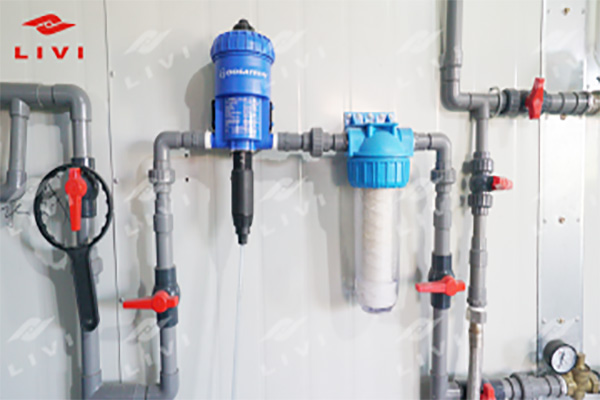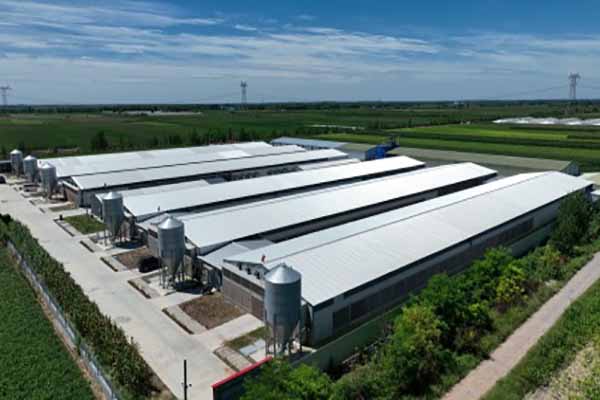How to Start a Free-Range Chicken Farm: A Comprehensive Guide
Time : 2025-06-30
Starting a free-range chicken farm is a rewarding venture that combines the passion for agriculture with the desire to provide high-quality, ethically raised poultry. This guide will walk you through the essential steps to get your free-range chicken farm up and running, from选址 to equipment and management practices.
1. Research and Planning
Before diving into the world of free-range chicken farming, thorough research and careful planning are crucial.
1.1 Market Research
Understand the demand for free-range chicken products in your area. Research local markets, grocery stores, and restaurants that might be interested in purchasing your produce. This will help you gauge the potential market size and your pricing strategy.
1.2 Legal Requirements
Ensure you are aware of all local and national regulations regarding free-range farming. This includes permits, zoning laws, and any health and safety standards that must be met.
1.3 Business Plan
Create a detailed business plan that outlines your goals, marketing strategy, financial projections, and operational plan. This will serve as a roadmap for your farm and can be crucial for securing financing.
2. Selecting the Right Location
The location of your free-range chicken farm can significantly impact its success.
2.1 Land Availability
Look for land that offers ample space for chickens to roam and graze. The ideal location should have access to clean water, be easily accessible to your target market, and have minimal environmental impact.
2.2 Proximity to Feed Suppliers
Being close to feed suppliers can reduce transportation costs and ensure a steady supply of quality feed.
2.3 Zoning and Regulations
Check local zoning laws to ensure that raising chickens is permitted in your chosen location. Some areas may have restrictions on the number of chickens allowed per acre.
3. Building the Infrastructure
The infrastructure of your free-range chicken farm should support the health and well-being of your chickens while minimizing costs and environmental impact.
3.1 Coops and Pens
Construct sturdy, well-ventilated coops and pens that provide protection from predators and harsh weather. Ensure that the space is large enough for the number of chickens you plan to raise.
3.2 Access to Outdoor Space
Provide ample outdoor space for chickens to forage and roam. This not only improves their quality of life but also contributes to the nutritional value of the eggs and meat.
3.3 Water and Feed Systems
Install a reliable water supply and automated feed systems to ensure that chickens have access to fresh water and feed at all times.
4. Choosing the Right Chicken Breeds
Selecting the right breeds for your free-range chicken farm is essential for productivity and profitability.
4.1 Egg Production
For egg production, consider breeds like the Ameraucana, Orpington, or Rhode Island Red, which are known for their high egg-laying capacity and adaptability to various climates.
4.2 Meat Production
For meat production, breeds like the Cornish Cross or Red Ranger are popular due to their rapid growth and excellent flavor.
4.3 Dual-Purpose Breeds
For a farm that produces both eggs and meat, dual-purpose breeds like the Sussex or Barred Plymouth Rock are ideal.

5. Farm Management and Biosecurity
Effective management and biosecurity are key to the success of your free-range chicken farm.
5.1 Feeding and Watering

Provide a balanced diet that meets the nutritional needs of your chickens. Ensure clean, fresh water is always available.
5.2 Health and Wellness
Regularly monitor the health of your chickens and seek veterinary care when necessary. Implement biosecurity measures to prevent the spread of diseases.
of your chickens and seek veterinary care when necessary. Implement biosecurity measures to prevent the spread of diseases.
5.3 Record Keeping
Keep detailed records of your flock’s growth, health, and productivity. This information will be invaluable for making informed decisions and for financial management.
6. Marketing and Sales
Develop a marketing strategy to reach your target market and establish a sales channel for your products.
6.1 Branding
Create a strong brand identity that reflects the values of your free-range chicken farm, such as ethical farming practices and high-quality produce.
6.2 Direct Sales
Sell directly to consumers through farmers’ markets, farm stands, or online platforms. This allows you to maintain a direct relationship with your customers and build a loyal customer base.
6.3 Wholesale Sales
In addition to direct sales, consider selling to local restaurants, grocery stores, or wholesalers to increase your market reach.
7. Financial Planning
Sound financial planning is essential for the long-term success of your free-range chicken farm.
7.1 Start-Up Costs
Estimate your start-up costs, including land, infrastructure, equipment, and initial flock purchase. Secure financing if necessary.
7.2 Operating Costs
Monitor your operating costs, including feed, water, utilities, and labor. Develop a budget to ensure your farm remains financially viable.
7.3 Revenue Streams
Identify multiple revenue streams, such as egg sales, meat sales, and educational farm tours, to diversify your income and reduce financial risk.
Starting a free-range chicken farm requires careful planning, dedication, and a deep understanding of both the agricultural and business aspects of the operation. By following this guide and remaining committed to your goals, you can establish a successful, sustainable free-range chicken farm that meets the needs of both your flock and your customers.











